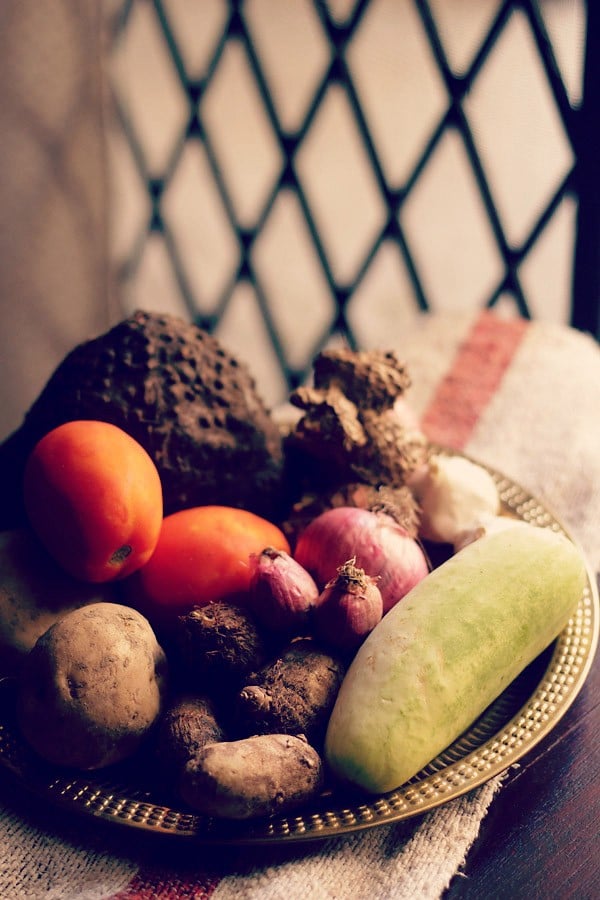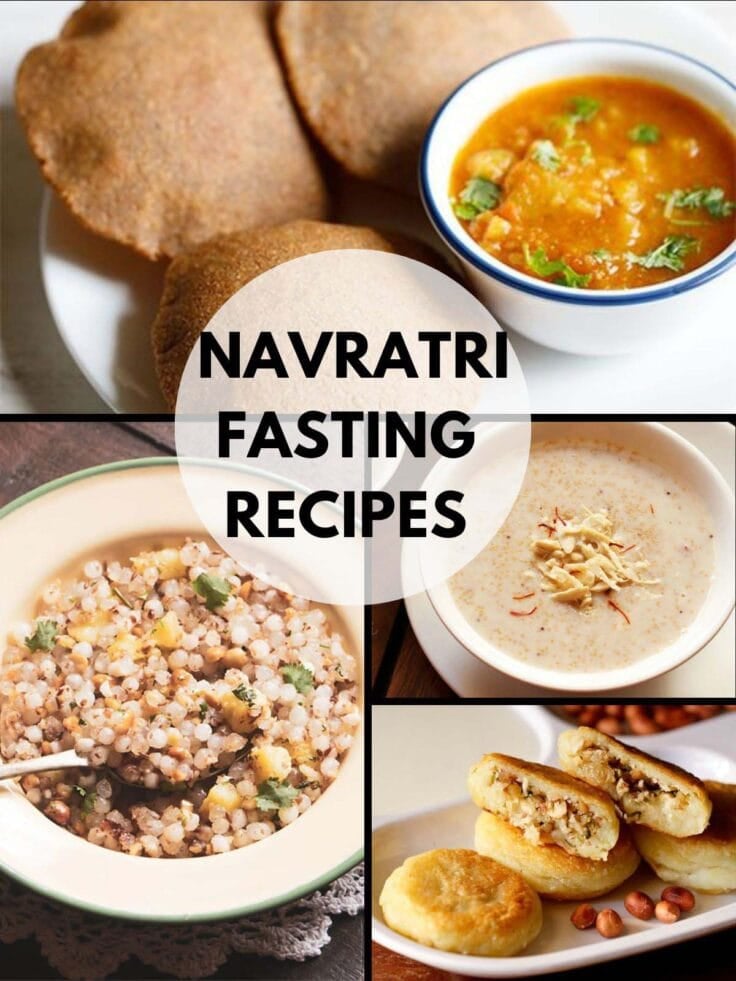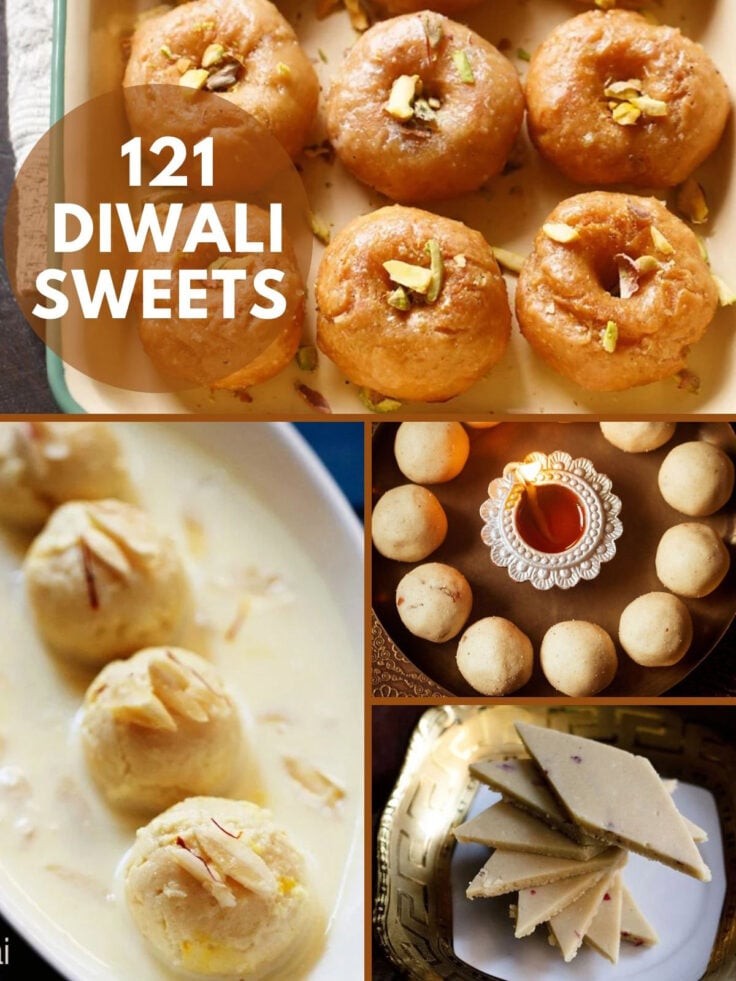Types of Beans: 58 Varieties with Pictures
Beans come in many shapes, colors, and flavors, and are part of everyday cooking across the world. In this post, I’m sharing 58 important types of beans with names, pictures, and uses. You’ll find both Indian staples like rajma, moong, and toor dal, as well as global favorites such as black beans, pinto, and cannellini beans. This list gives you a clear overview of the most commonly cooked and eaten beans without overwhelming you with hundreds of rare varieties.
Most of these beans are part of everyday Indian cooking, while some are more common in global cuisines and may not be easily available here.
I’ve included them so you have a clear reference to both local staples and international varieties. Think of this as a handy guide you can return to whenever you want to understand or identify different types of beans.

Different Types of Beans
Beans belong to the plant family Fabaceae (Leguminosae), one of the largest families in the world that also includes lentils, peas, chickpeas, peanuts, and soybeans. They are the edible seeds of these plants, grown and eaten worldwide.
From moong and toor dal to kidney beans and soybeans, these tiny seeds are rich in protein, fiber, and nutrients, making them an important part of daily meals across cultures.
Beans are part of global food cultures as well as Indian staples. Indian kitchens use rajma, chana, moong, urad, and toor dal in dals, curries, stir-fries, and snacks. In Latin America, black beans and pinto beans are everyday foods.
Table of Contents
The Mediterranean loves chickpeas, fava beans, and cannellini beans. East Asia uses soybeans, mung beans, and adzuki beans in both savory and sweet recipes. Their adaptability across continents makes beans one of the most important foods in the world.
If you’re looking for the names of lentils in English, Hindi, and other Indian languages, check out my detailed guide on Lentil Names for quick reference.
Global Beans (Phaseolus vulgaris)
Phaseolus vulgaris, or the common bean, includes some of the most popular beans in the world – kidney, pinto, navy, black, Great Northern, and cranberry beans.
They first grew in the Americas and later spread across continents, finding a place in everyday cooking from stews to salads.
Chickpeas and peanuts aren’t part of this species but belong to the same Fabaceae family, and they’re just as loved globally. Together, these types of beans and legumes show how one plant family can bring so much variety to our plates.
1. Kidney Beans
Kidney beans are plump, kidney-shaped legumes with a firm texture and rich, earthy taste. They absorb spices beautifully, which makes them ideal for dishes like Rajma Masala in India or chili con carne in Mexico. Their hearty bite holds up well in stews, soups, and salads, making them one of the most popular beans worldwide.
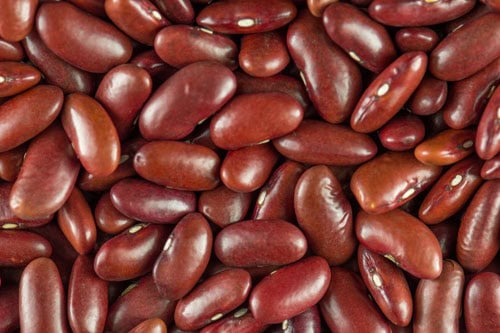
2. Cannellini (White Beans)
Cannellini beans are also called white kidney beans. These are large kidney-shaped legumes have a delicate nutty taste and a creamy, velvety texture. Popular in Italian cooking, they’re the base of Minestrone and pair beautifully with garlic, olive oil, and herbs.
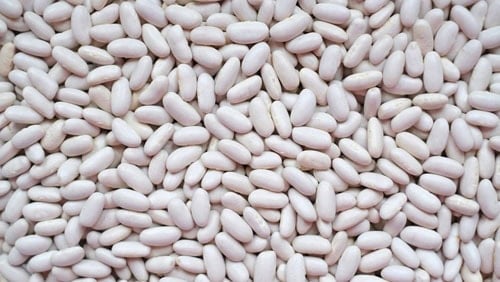
3. Black Beans
Black beans are small, shiny legumes with a rich, earthy flavor and creamy texture when cooked. They’re used in Latin American dishes like Tacos, Burritos, and Brazil’s feijoada, and also in Mexican Bean Salad.

4. White Chickpeas
White chickpeas are round, pale beans with a nutty flavor and creamy bite once cooked. They are the base for Middle Eastern Hummus and Falafel, Indian Chole Masala, Chickpea Salad and countless soups and stews.
Their adaptability to both traditional and modern recipes makes them a kitchen staple across the globe.

5. Pinto Beans
Pinto beans are beige with reddish streaks that turn uniform when cooked. They have a creamy, nutty taste and are key in Refried Beans, burritos, and Southwestern stews.
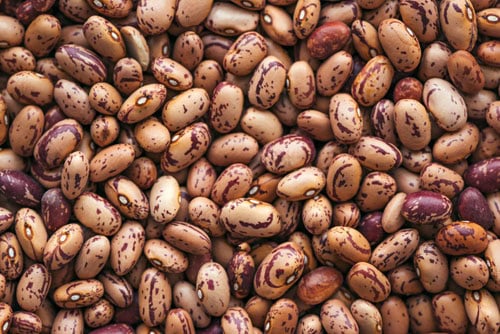
6. Navy Beans
Navy beans are small, oval white legumes with a mild flavor and a creamy, tender texture when cooked. They’re best known for baked beans, but also go into hearty soups and stews where they absorb surrounding flavors beautifully.
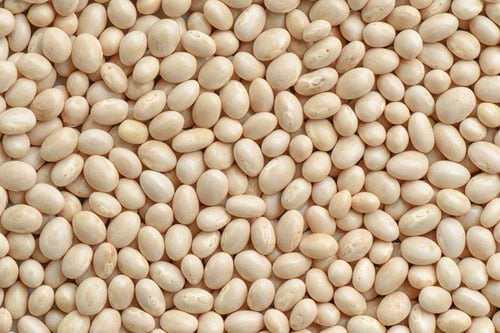
7. Great Northern Beans
Great Northern beans are pale white legumes that offer a delicate nutty flavor and cook to a tender but sturdy texture. They hold their shape well in cooking, making them ideal for soups, stews, and casseroles where they soak up surrounding flavors.
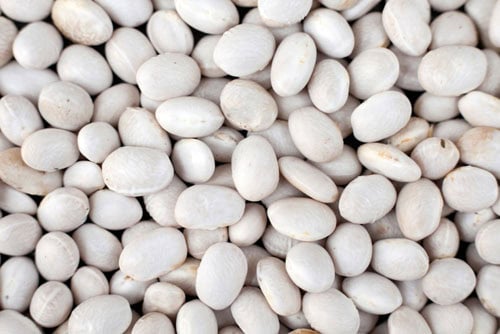
8. Cranberry Beans (Borlotti)
Cranberry beans, also called borlotti beans, are tan or cream-colored legumes with striking reddish-maroon streaks. They have a mild, nutty flavor and a creamy texture, making them popular in Italian, Portuguese, and South American dishes like pasta e fagioli, hearty stews, and bean soups.
While they look similar to pinto beans, cranberry beans are larger, plumper, and red-speckled, whereas pinto beans are smaller with brown speckles that turn light brown when cooked.
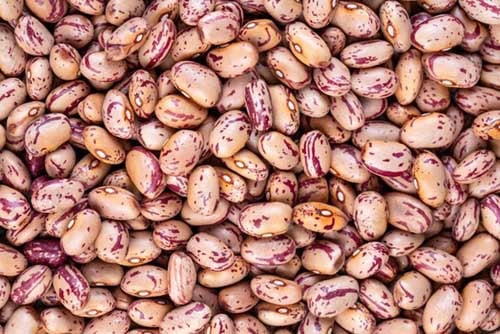
9. Peanuts
Peanuts are a protein-rich legume with a sweet, earthy flavour and crunchy bite when raw or roasted. You’ll find them used whole (snacks, Chikki), crushed into Peanut Chutney and sauces, pressed for peanut oil, or ground into peanut butter and satay sauces.
They add body and richness to curries, salads, and sweets, but note they’re a common allergen.
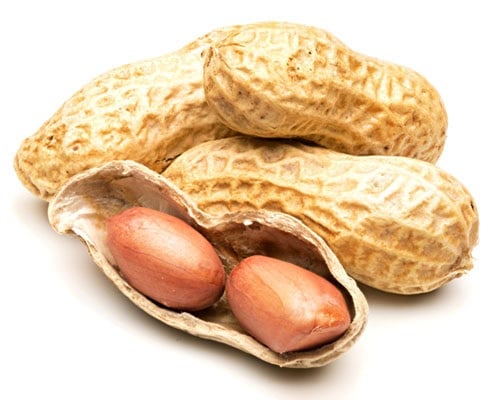
Popular Indian Beans
India has a rich variety of pulses and legumes that count among the most popular types of beans worldwide. These staples like rajma, moong, toor, urad, and chana, form the base of dals, curries, snacks, and festive dishes.
They are everyday ingredients that bring both nutrition and flavor to Indian meals while also overlapping with global cuisines.
10. Pigeon Peas (Toor Dal) – Hulled & Split
Golden-hued and gently nutty, split pigeon peas transform into a soft, creamy delight when cooked, adding warmth and subtle flavor to any dish. They are the base of many Indian dals and stews like Sambar, Dal Fry and Dal Tadka. Even spice mixes like Rasam Powder include these lentils.
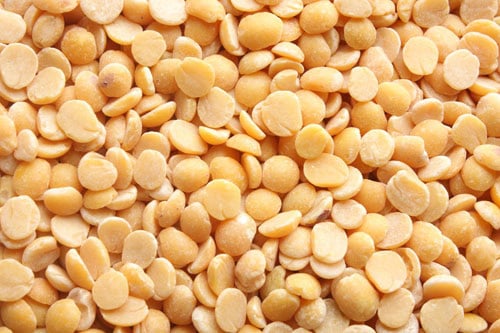
11. Whole Pigeon Peas
Whole pigeon peas are round, beige-green legumes with a slightly nutty, earthy flavor. Often used in dals, stews, and soups, they cook to a soft, creamy texture while holding their shape.

12. Whole Green Gram (Moong)
Whole moong beans are small green colored legumes with a gentle, mild sweet flavor and a soft texture when cooked. They’re Sprouted for Salads, cooked in light dals, or made into Moong Dal Curry. Easy to digest, they’re valued in both Indian and Asian cuisines.
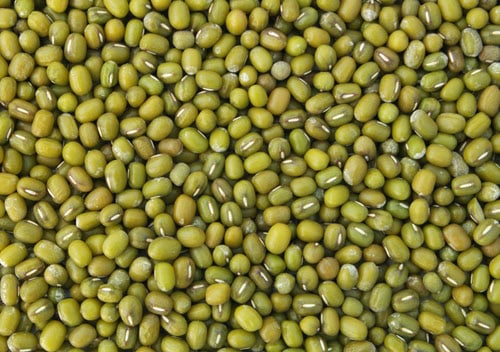
13. Green Gram (Split & With Skin)
Split moong with skin has an earthy taste and soft texture when cooked. It’s used in dal, soups, and khichdi. Nutritious and quick-cooking, it balances health and flavor.

14. Yellow Moong (Split & Hulled)
Hulled yellow moong dal cooks quickly to a soft, mild texture. It’s used to make simple and healthy Moong Dal Recipe as well as Khichdi.
Also great in snacks like Moong Dal Pakoda, Moong Dal Dosa and Ram Ladoo. These lentils also makes delicious sweets like Moong Dal Laddu, Paruppu Payasam and Moong Dal Halwa.

15. Whole Black Gram (Urad)
Whole urad dal is a small, black legume with a deep, earthy taste that turns creamy when cooked. Its rich in protein and used in popular dishes like Dal Makhani, Punjabi Black Dal, and also in batters for idli and dosa traditionally.

16. Black Gram (Split & With Skin)
Split urad with skin has a robust, earthy taste and adds body to dals and snacks. It holds its shape well in curries and is also used in fritters and lentil mixes.
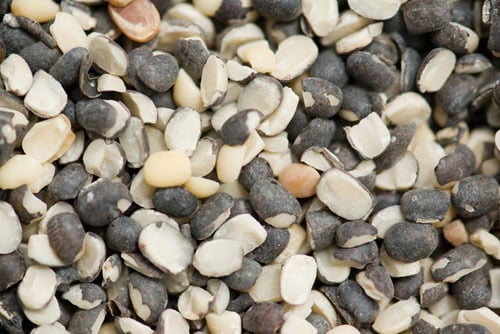
17. Black Gram, Split & Hulled (Urad Dal)
Hulled urad dal is a protein rich lentil. It is pale and mild, turning creamy when cooked. It’s essential for Idli, Dosa, and Medu Vada. It also works as a binder in lentil snacks and is used to make Dry or soupy dishes.

18. Black Chana (Kala Chana)
Black chana are small, dark chickpeas with a firm, slightly nutty taste and a dense texture that holds up to long cooking. Use them in curries (like this Kala Chana Recipe), snacks like Kala Chana Chaat and sautéed dishes like Kala Chana Sundal.
These black chickpeas are also used to make slow-cooked stews or sprouted for salads and snacks. They’re high in fiber and protein, and work well when you want a slight chewy texture.
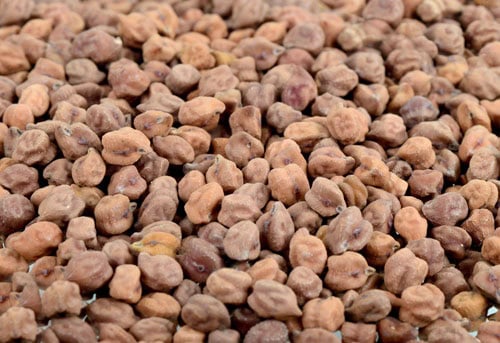
19. Green Chickpeas (Fresh/Dried)
Fresh green chickpeas are tender legumes with a sweet, nutty flavor. Both the dried and fresh chickpeas are enjoyed roasted, boiled, or tossed into chaats for a crunchy bite. In many regions, they’re also added to curries and seasonal stir-fries, bringing freshness and texture to simple meals.
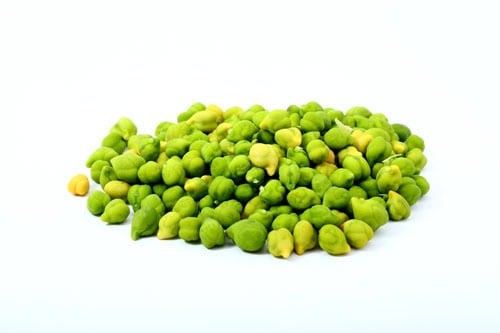
20. Roasted Chana (Whole/Split Dalia)
Roasted chana is made commercially by dry-roasting chickpeas on hot sand. This dry roasting gives them a lovely crunchy texture and nutty taste. They’re eaten plain, spiced, or in mixes like Chivda, Mixture and Coconut Chutney. This snack is light, protein-rich, and commonly used in Indian diets.
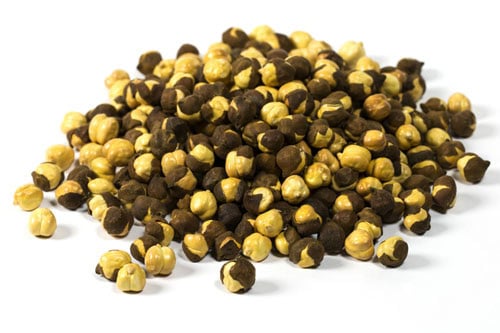
21. Bengal Gram (Chana Dal)
Chana dal comes from split brown chickpeas and is available in both polished and unpolished forms. It has a mild, earthy taste with a subtle nutty flavor, making it a staple for dals, snacks, and sweets in Indian cooking.
Used in Chana Dal Recipe, snacks like fritters, dosa, dhokla and even traditional Indian sweets. Packed with protein and easy to cook, it fits into countless everyday dishes.
Chana dal, when ground, becomes gram flour or besan. This flour has a nutty flavor and is widely used to make pakoras (Onion, Potato, Vegetable, and more).
It’s also the base for many savory snacks (Khaman, Chilla etc) and Indian sweets like Besan Ladoo and Besan Barfi.

22. Moth Beans (Matki)
Moth beans are tiny, brown legumes with a strong earthy taste. Popular in sprouted form, curries like Matki Usal, and stir-fries, they cook quickly and blend well with spices.

23. Horse Gram (Kulith/Gahat)
Horse gram is a reddish-brown bean with a robust, earthy flavor. It’s used in soups, chutneys, and rustic curries like Horse Gram Curry. Known for its health benefits, it’s common in traditional diets.

24. White Cowpeas (Black-Eyed Beans)
Black-eyed peas are pale beans with a black spot and a nutty taste. They’re cooked in Black Eyed Peas Curry or this North Indian Lobia Masala, stir-fries, and salads. Their soft bite makes them adaptable in global cuisines too.
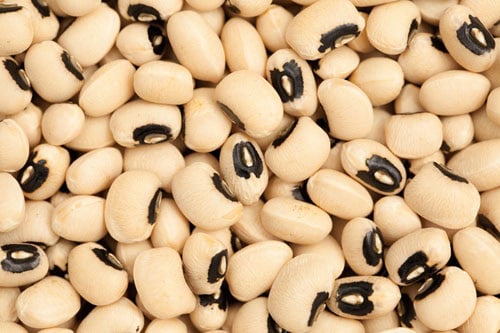
25. Red Cowpeas
Red cowpeas are oval, reddish-brown beans with a nutty flavor. In South India, they’re used in dishes like Olan and Mathanga Erissery. They also work well in stews and salads.
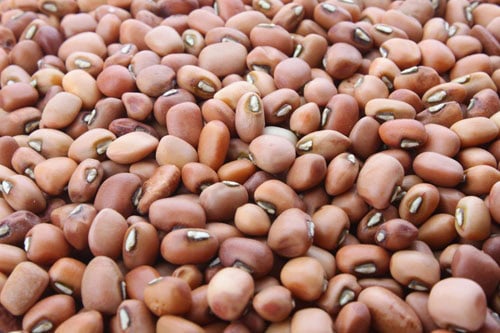
26. Brown Cowpeas
Brown cowpeas are medium-sized legumes with a warm brown color and a mild, earthy flavor. They blend beautifully into soups, curries, and stir-fries, absorbing flavors while retaining a pleasant bite.
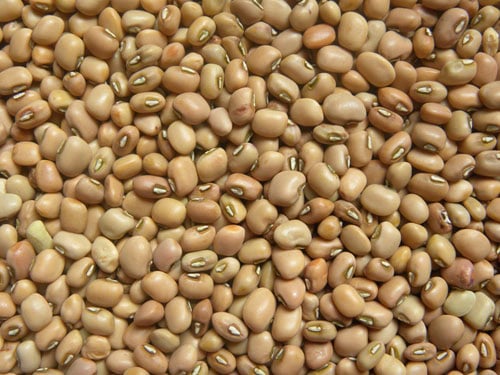
27. Hyacinth Beans (Lablab)
Hyacinth beans are flat, oval-shaped legumes that come in fresh or dried form, with a mild, slightly sweet flavor. Both the green tender pods and beans are used in curries, regional stir-fries and more; they add both texture and taste to dishes.
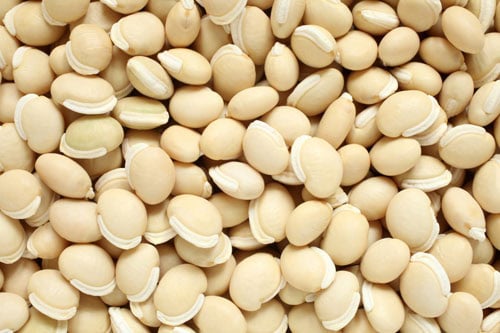
28. Green Peas (Fresh/Dried)
Green peas are tender, sweet legumes enjoyed fresh or dried. They add color and flavor to dishes like Matar Paneer, Peas Pulao, soups, and salads. Due to their light sweetness, they’re well liked by children and fit into many meals.

29. Dried White Peas
Dried white peas are small legumes with a gentle sweetness and creamy texture after cooking. They’re popular in chaats snacks like Ragda Patties, Masala Puri and Bengali Ghugni. Their ability to soak up spices makes them a street-food favorite.
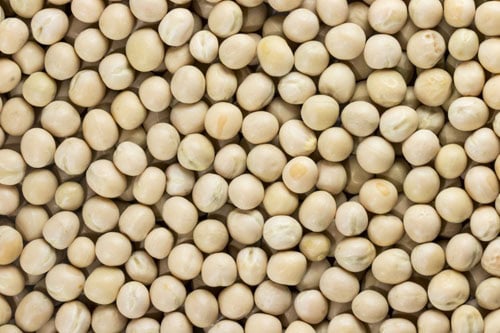
30. Black Peas
Black peas are small, dark legumes with an earthy taste and firm texture. They’re often cooked in coastal Maharashtrian recipes like Usal and Black Peas Curry, where they pair well with coconut and bold spices.
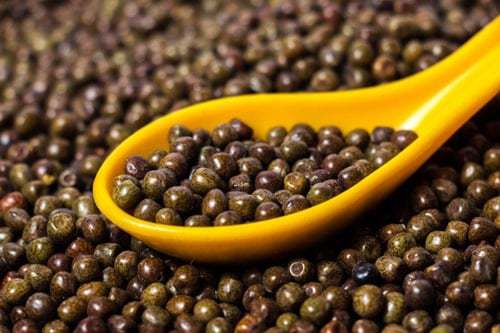
Lentils & Small Lentil Varieties
Lentils are also a part of the legume family and often grouped when talking about types of beans. They cook faster than most beans, have a softer texture, and adapt well to dals, soups, stews, and salads.
From everyday Indian masoor dal to French Puy and Beluga lentils used in global cuisines, these tiny pulses bring both nutrition and versatility to meals.
31. Red Lentils, Whole (Masoor)
Whole red lentils are small, lens-shaped legumes with a mild, earthy taste and a firm texture that softens when cooked. They work well in hearty Whole Masoor Dal, soups, and slow-cooked stews where a bit of bite is wanted. Use them in one-pot meals and rustic preparations that are tasty as well as healthy.
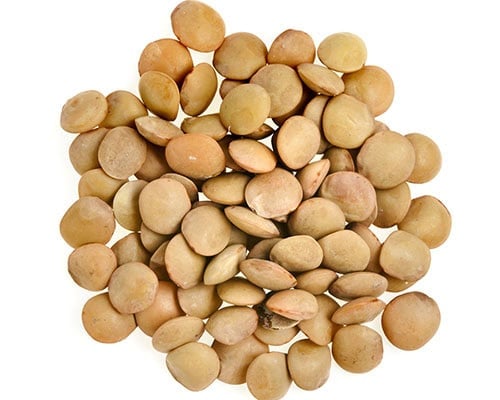
32. Red Lentils, Hulled & Split (Masoor Dal)
Hulled and split red lentils cook very quickly to a soft, creamy mash with a mild, slightly sweet flavor. They are ideal for quick Masoor Dal recipe, purees and soups. Think dal fry or tadka, simple soups, and khichdi. Because they break down fast, they’re perfect when you want a silky texture without long simmering.
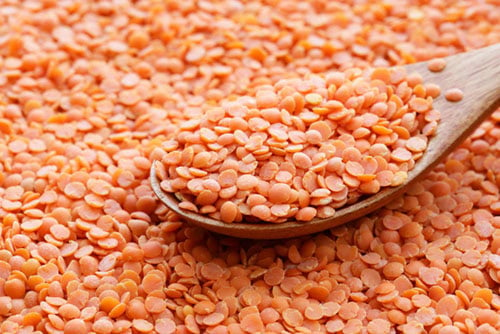
33. French Puy Lentils
French Puy lentils are small, dark-green-speckled lentils with a peppery, slightly mineral flavor and a firm, slightly chewy texture. They hold their shape when cooked, so they shine in salads, warm bowls, and side dishes that need texture. Try them in a warm salad with roasted vegetables or a herby lentil stew.

34. Beluga Lentils
Beluga lentils are tiny, glossy black lentils that look like caviar. They have a mild, earthy flavor and keep their shape after cooking, which makes them ideal for salads, cold preparations, and simple side dishes. Use them where you want a compact, slightly chewy lentil that adds visual contrast and bite.

Fresh Beans / Vegetable Beans
Not all beans are dried and stored as pulses. Some types of beans are eaten fresh as vegetables. These include French beans, cluster beans, snap peas, and snow peas.
Their tender pods and seeds bring sweetness, crunch, and color to stir-fries, curries, salads, and rice dishes, making them everyday favorites in many cuisines.
35. French Beans (Haricot/String Beans)
French beans are slender, crisp green pods with a mild, slightly sweet flavor and tender bite. In Indian kitchens, they are often stir-fried into sabzi (French Beans Recipe), added to Pulao or mixed-veg curries, and paired with potatoes or carrots.
Across the world, they’re blanched for salads, sautéed with garlic and butter, or used in casseroles, making them a versatile fresh bean for everyday cooking.
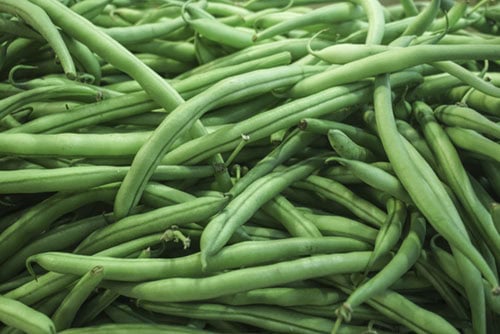
36. Cluster Beans (Guar Beans)
Cluster beans are slender, green pods with a slightly bitter taste and a crisp, fibrous texture. In India, these are commonly used in curries, stir-fries like this Cluster Beans Recipe and pickles, they soften and mellow in flavor when cooked.
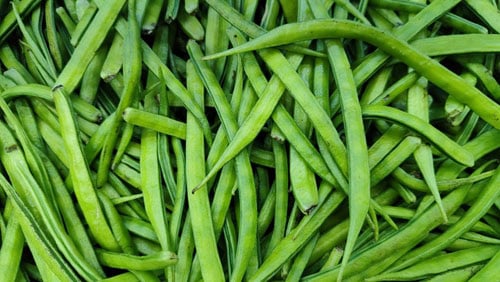
37. Long Beans (Yardlong/Snake Beans)
Long beans are slender green pods that can grow up to a yard in length, giving them their name. They have a mild, earthy flavor and a crisp texture when cooked briefly. Common in Southeast Asian, Chinese, and Filipino cooking, they’re stir-fried (Long Beans Recipe), curried, or added to noodle, Salads and rice dishes for crunch and color.
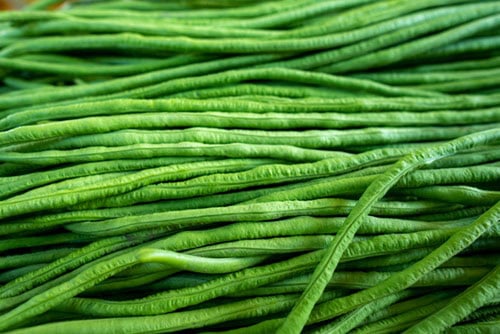
38. Snap Peas (Fresh)
Snap peas are plump, crisp green pods with a sweet, juicy flavor and edible shells. Enjoyed raw, steamed or stir-fried, they bring a fresh crunch to salads and cooked dishes alike.
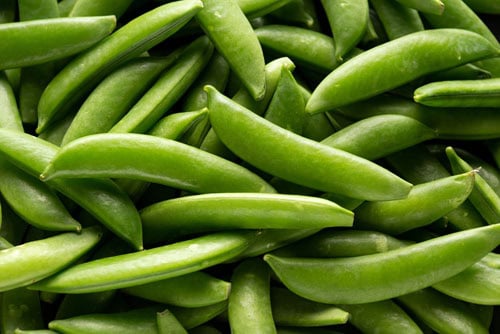
39. Snow Peas
Snow peas have thin, edible pods with a crisp, sweet flavor and a tender crunch. Cook them briefly stir-fried, tossed into noodles, or raw in salads to keep their snap and bright color. They pair well with light sauces, citrus dressings, and quick Asian-style sautés.

Soybeans
Soybeans belong to the legume family and are among the most protein-rich types of beans. They’re used in both traditional diets and modern plant-based cooking, making them one of the most versatile legumes worldwide.
Beyond soy milk, tofu, and flour, they’ve given rise to popular vegetarian proteins like soya chunks, soya granules and soya chaap which often act as mock meat in curries, grills, and stir-fries.
On the blog I have shared recipes with these proteins like Soya Chunks Curry, Soya Biryani, Soya Granules Recipe, and Soya Chaap Masala,
In Asian cuisines, fresh edamame is eaten as a snack, while globally soy is used in everything from burgers to dairy-free yogurts. This balance of tradition and innovation makes soybeans one of the most versatile legumes in the world.
40. Yellow Soybeans (Dry)
Yellow soybeans are firm legumes with a nutty flavor and dense texture. Traditionally, they’re used to make soy milk, tofu, and soy flour. They also add body to soups, stews, and gravies.

41. Black Soybeans (Bhatma)
Black soybeans are nutrient-rich beans with a deep, earthy flavor. In India, they’re often sprouted or cooked in rustic curries. In global cuisines, they’re used in soups, salads, and stir-fries for their bold taste.
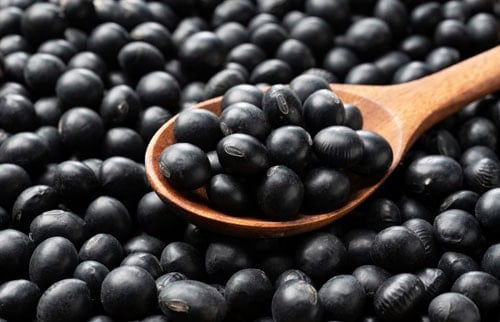
42. Green Soybeans (Edamame)
Edamame are fresh, tender soybeans with a slightly sweet taste and soft bite. Steamed and salted, they’re enjoyed on their own or mixed into fresh salads and warm stir-fries. A staple in Japanese and East Asian cuisines.
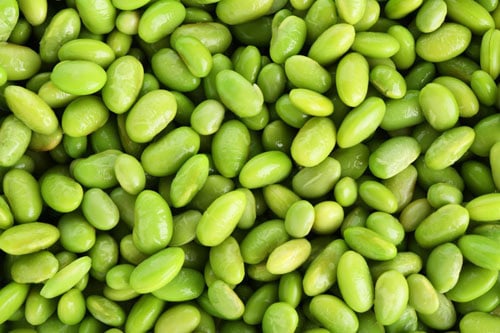
Regional Types of Beans (Popular in Specific Cuisines)
Beyond the familiar varieties, there are regional types of beans that shine in global cuisines, each with its own flavor and texture. These are less common in Indian kitchens but worth trying for their versatility.
43. Adzuki Beans
Adzuki beans are petite legumes with a red-brown hue and a light, nutty-sweet flavor. Commonly used in Japanese, Korean, and Chinese cooking, they feature in both savory dishes and sweet preparations like red bean paste.
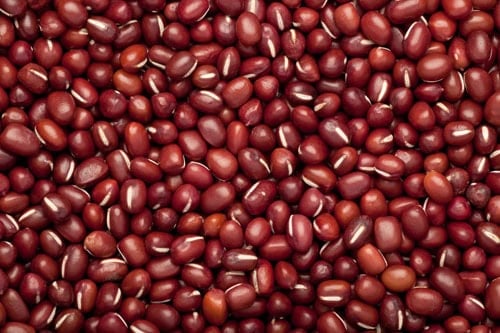
44. Fava Beans (Broad Beans)
Fava beans are large, flat green beans with a buttery flavor and creamy bite. Widely eaten across the Mediterranean, Middle East, and North Africa, they’re used in dishes like ful medames, falafel, and hearty stews.
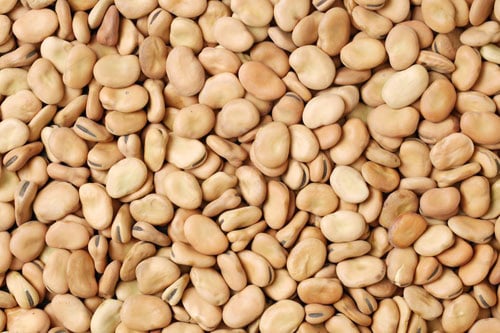
45. Lima Beans (Butter Beans)
Lima beans are plump, pale green or cream-colored legumes with a smooth, buttery flavor and tender texture. Popular in Latin America, the southern United States, and parts of Europe, they add creaminess and depth to soups, stews, and casseroles.

46. Winged Beans
Winged beans are unique, four-angled beans with frilled edges and a mildly sweet flavor. Grown and eaten mainly in Southeast Asia, they are used in stir-fries, curries, and salads, bringing both taste and visual appeal.

47. Scarlet Runner Beans
Scarlet runner beans are bold, eye-catching beans known for their vivid colors with a mottled pink-purple pattern and a hearty, nutty flavor.
Native to Central and South America but also popular in European kitchens, they bring both beauty and taste to the table, shining in soups, stews, and fresh salads alike.
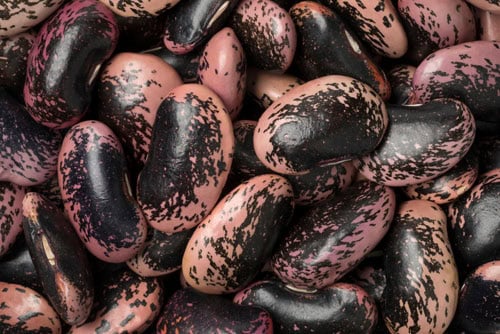
48. Sword Beans
Sword beans are large, elongated legumes with a firm texture and a mildly bitter, earthy flavor. Used in traditional cooking in South India, Sri Lanka, and Southeast Asia, they often go into curries, stews, and herbal preparations, but require thorough cooking to enhance taste and digestibility.
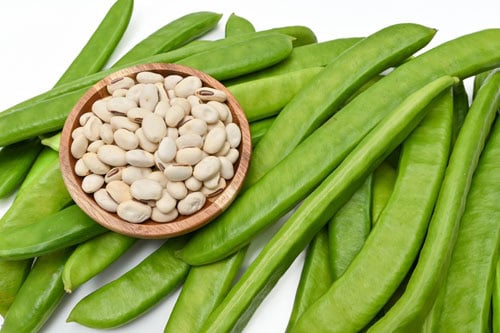
49. Jack Beans
Jack beans are large, oval legumes with a pale cream or white color and a mild, earthy flavor. Found in Africa, Asia, and the Americas, they are used in rustic stews, soups, and some traditional medicinal recipes, though they require proper cooking for safe consumption.

50. Rice Beans
Rice beans are small, elongated legumes resembling rice grains, with a cream or reddish-brown hue and a mild, nutty taste. Common across Nepal, the Himalayan belt, and Southeast Asia, they are used in soups, curries, and stir-fries, cooking quickly and blending well with spices.

51. Anasazi Beans
Anasazi beans are small, kidney-shaped legumes marked with red speckles on a cream background. They have a mildly sweet, nutty flavor and cook faster than many other beans. Popular in Southwestern U.S. and Mexican cuisine, they’re used in chili, soups, and refried beans, and hold their shape well in slow cooking.

52. Marama Beans
Marama beans are large, chestnut-sized brown legumes found only in southern Africa. Native to arid regions like Namibia, Botswana, and South Africa, they are prized for their rich, nutty flavor. The beans are often roasted or ground into flour, but remain little known outside Africa. The image below shows their unusually big seeds inside the pod.
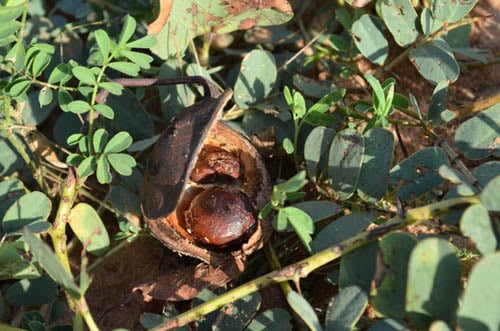
53. Bambara beans
Bambara beans are small, round legumes that come in shades of cream, red, and brown, with a gentle nutty flavor. A staple in West and Central Africa, they are commonly boiled, roasted, or ground into flour for both savory and sweet dishes.
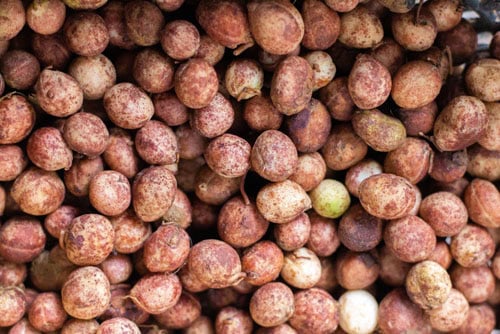
54. Chickling Vetch (Lathyrus)
Chickling vetch is also called Kesari dal or Khesari in India. It is a hardy legume with a mild, nutty flavor and a firm bite that works well in rustic dals, porridges, khichdis, and sprouted salads. It adds body and an earthy note to simple, comforting dishes and is also grown in parts of South Asia and Africa.
The bean contains ODAP, a compound which can cause the neurological condition lathyrism if people eat large amounts over long periods. Because of that history many places restricted its use.
Modern research and low-ODAP variants (grass-pea types bred to contain much lower β-ODAP) suggest that moderate consumption of properly processed chickling vetch is much safer.
To reduce risk, always soak and discard the soaking water, then pressure-cook or boil thoroughly, or sprout before using. Treat this legume as a special-use pulse: use in moderation and check local rules if you plan to source or sell it.
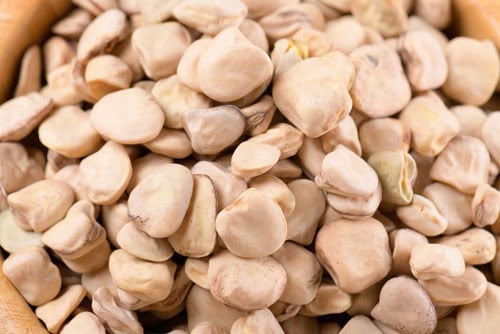
55. Field Peas
Field peas are small, round legumes that range in color from green to cream or speckled, with a mild, earthy flavor. Unlike sweet green peas, they are starchier and more robust, making them ideal for rustic dishes.
Popular in Southern U.S. cuisine as well as parts of Africa and Europe, they are used in soups, stews, and sides. In Italy, a heritage variety known as Roveja is prized for its earthy taste in traditional recipes.
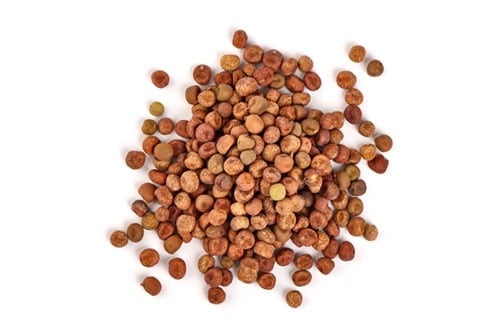
56. Velvet Beans (Mucuna)
Velvet beans are long, fuzzy pods containing shiny, dark brown or black seeds with a robust, earthy flavor. Known in traditional remedies across Africa, South Asia, and tropical regions, they are usually roasted or boiled before being added to curries, tonics, and herbal preparations.
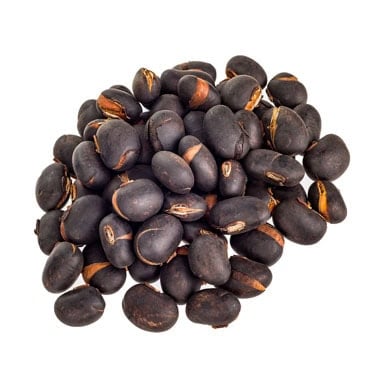
Other Plant-Based Beans
Some beans, like cocoa and coffee, belong to the legume family but aren’t used as food pulses or vegetables. Instead, they’re grown for beverages, chocolate, and other products.
57. Cocoa Beans (Also Called Cacao Beans)
Cocoa beans are harvested as dried seeds from the cacao tree, first cultivated in Central and South America. They have a deep, bitter taste that turns chocolatey once fermented and roasted. Mostly used to make cocoa powder, chocolate, and cacao nibs, they are technically legumes but not eaten as pulses or vegetables.
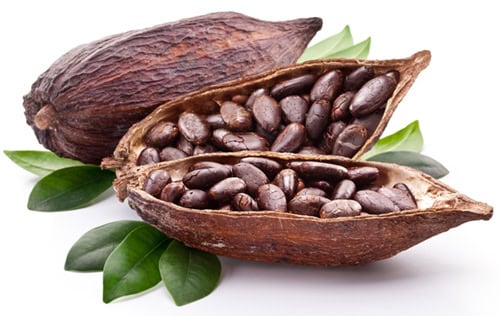
58. Coffee Beans
Coffee beans are the roasted seeds of the Coffea plant, grown in tropical regions like South America, Africa, and Asia. While not culinary beans, they belong to the legume family. Known for their strong aroma and bitter, complex flavor, they are brewed worldwide into one of the most popular drinks – Coffee.
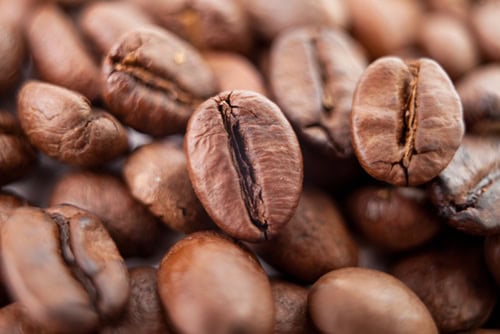
Beans, dals, and lentils have always been the backbone of vegetarian cooking, whether in India or around the world. I hope this list helps you recognize the varieties more easily and inspires you to cook with them. If you’d like to try some recipes, you can explore my collection of Lentil and Bean Recipes for ideas.
Image Credits: All bean images used here are licensed stock photos from Shutterstock (Standard License).



